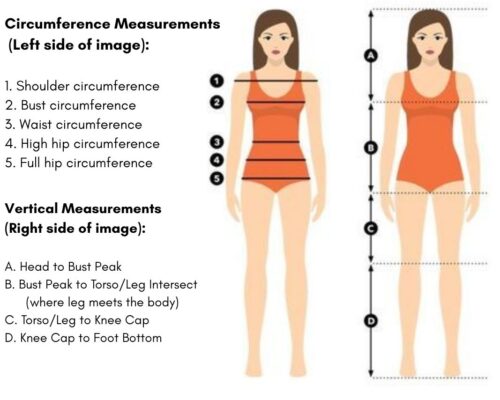Non-Woven Fabric
“Non-woven fabric: Where threads of ingenuity intertwine, crafting a fabric that redefines possibilities and shapes the future of innovation.”
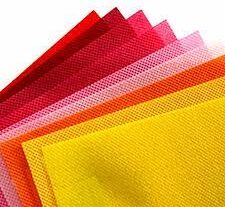
A Versatile Material for Various Applications that has gained significant popularity in numerous industries. Its unique characteristics and wide range of applications make it an essential component in various products we use in our daily lives. In this article, we will explore the fascinating world of non-woven fabric, its manufacturing process, and its diverse uses across different sectors.
What is Non-Woven Fabric?
Introduction
The word Non-woven is stand for “not a woven” or “not a knit”. The term “Non Woven Fabric” for the first time coined in about 1942. Felt is considered one of the oldest types of non-woven fabrics. It is typically made from either 100% wool fibers or a blend that includes wool fibers.
In the prologue of the engineering book titled “Introduction to Nonwovens Technology” by Dr. Subhash Batra and Dr. Behnam Pourdeyhimi, it is mentioned that several natural examples of non-woven structures exist, such as bird nests, silk worm cocoons, and spider webs, among others.
Deffination
According to ISO 9092:1988, a nonwoven fabric is “a manufactured sheet, web or batt of directionally or randomly orientated fibres, bonded by friction, and/or cohesion and/or adhesion, excluding paper and products which are woven, knitted, tufted, stitch-bonded incorporating binding yarns or filaments, or felted by wet-milling, whether or not additionally needled. The fibres may be of natural or man-made origin”.
According to ASTMD, “A textile structure is produced by interlocking or bonding of fibres or both accomplished by chemical, mechanical or solvent means and combination is known as non-woven fabric”.
INDA defines a nonwoven as “sheet or web structures bonded together by entangling fiber or filaments (and by perforating films) mechanically, thermally or chemically. They are flat, porous sheets that are made directly from separate fibers or from molten plastic or plastic film. They are not made by weaving or knitting and do not require converting the fibers to yarn” (INDA).
Manufacturing Process
The manufacturing process of non-woven fabric involves several steps. First, fibers are selected based on the desired characteristics of the final fabric. These fibers can be synthetic, natural, or a blend of both. This can be categorize in following:
Vegetable Fiber
Cellulose, a hydrophilic and hygroscopic compound, stands as the primary constituent in vegetable fibers. In addition to cellulose, vegetable fibers encompass various other substances that impact their characteristics. Among these fibers, cotton takes the lead as the most significant vegetable fiber employed in the production of nonwoven bonded fabrics.
Animal Fiber
Majorly, Sheep’s wool (Ovis aries) among all animal fibers only holds significance in the production of non-woven bonded fabrics. However, due to its high price, it is predominantly utilized in the form of reclaimed wool or cuttings. The quality variations and impurities present in reclaimed wool, along with the chemical and physical properties influenced by its origin, impose limitations on its usage.
Man-made fibers from synthetic polymers
The scope of nonwoven bonded fabrics has expanded to encompass a wide range of existing fibers to varying degrees. Nevertheless, certain fiber types have emerged as predominant in specific areas within this field.The two main types of fiber are
Next, the fibers are processed through techniques like carding or air-laying to form a web-like structure. The web is then bonded together through mechanical, chemical, or thermal methods, depending on the desired properties of the fabric. Finally, the fabric is subjected to finishing processes such as calendaring or coating to enhance its functionality.
Types-Non-Woven Fabric
Non-woven fabric can be classified into various types based on the manufacturing process and the properties of the final product. Some commonly used types include:
Spunbond
Spunbond non-woven fabric is produced by extruding continuous filaments onto a conveyor belt, which then undergoes a bonding process to form a strong, uniform fabric. It is known for its excellent strength, breathability, and resistance to liquids, making it suitable for applications in medical, geotextile, and filtration industries.
Meltblown
Meltblown non-woven fabric is manufactured by melting thermoplastic polymer fibers and then blowing them with high-speed hot air to create a fine fiber web. This type of fabric has exceptional filtration properties and is widely used in medical masks, air filters and oil absorbents.
Spunlace
Spunlace non-woven fabric is produced by entangling fibers using high-pressure water jets. It results in a soft, drapable fabric with excellent absorption properties. Spunlace fabric is often used in wipes, medical dressings, and hygiene products.
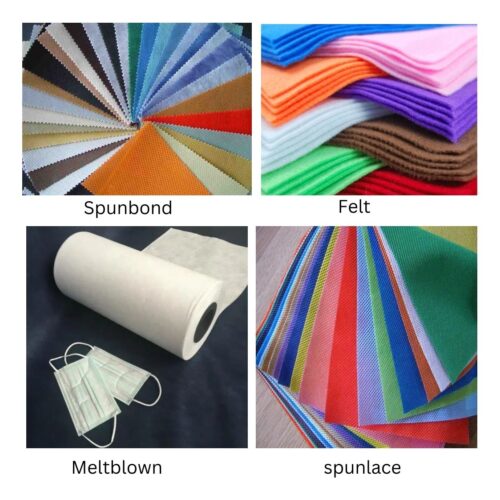
Needle-Punched
Needle-punched non-woven fabric is made by mechanically entangling fibers using barbed needles. This process creates a fabric with high dimensional stability and strength. It finds applications in geotextiles, automotive interiors, and insulation materials.
Air-laid Non-woven Fabric
Air-laid fabric is made by dispersing fibers into a web using air currents and then bonding them together with the help of adhesives or thermal bonding. It has good absorbency and is often used in hygiene products, tableware, and filtration applications.
Please note that this list includes commonly known types of non-woven fabrics, but the non-woven industry is continually evolving, and new variations and combinations may emerge over time. Following are a sort of them:
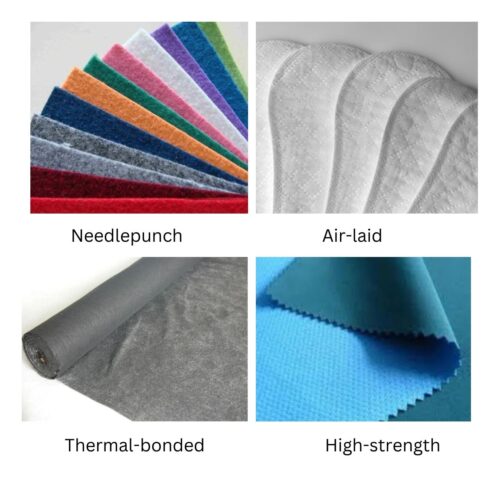
Stitch-bonded , Chemical-bonded, Composite, Laminated, Thermal-bonded, Hydroentangled, Stitchbonded, Wet-laid, Electrospun, Coform, Nanofiber, SMS (Spunbond-Meltblown-Spunbond), SSMMS (Spunbond-Spunbond-Meltblown-Meltblown-Spunbond), Chemically-bonded Stitchbonded, Ultrasonic-bonded, Composite Barrier, Antistatic, Conductive, Flame-retardant , Antibacterial, Biodegradable, High-strength , Low-weight, High-density, Low-density.
Applications-Non-Woven Fabric
The fabric is widely utilized across various industries due to its unique properties and versatility. Some of its prominent applications include:
Medical and Healthcare
Yes, this fabric plays a vital role in the medical and healthcare sector too. It is used in surgical gowns, masks, wound dressings, and sterilization wraps. The fabric’s ability to provide a barrier against bacteria and viruses, along with its breathability and comfort, makes it an ideal choice for medical applications.
Geotextiles and Construction
In the construction industry, non-woven geotextiles are employed for soil stabilization, erosion control, and drainage systems. These fabrics prevent soil erosion, reinforce slopes, and provide separation between different layers of soil.
Filtration and Wipes
The filtration industry extensively utilizes this fabric for air and liquid filtration applications. Non-woven filters are efficient in capturing particulate matter and contaminants. Additionally, this fabric is widely used in wipes for personal care, cleaning, and industrial purposes.
Automotive Industry
This fabric finds multiple applications in the automotive sector. It is used for interior components such as carpets, headliners, door panels, and trunk linings. The fabric provides sound insulation, abrasion resistance, and dimensional stability.
Packaging and Bags
It is an eco-friendly alternative to traditional packaging materials. It is used for making reusable shopping bags, gift wraps, and protective packaging. The fabric’s strength, flexibility, and recyclability make it an excellent choice for sustainable packaging solutions.

Apparel and Fashion
The fabric is increasingly used in the fashion industry to create innovative and sustainable clothing. It offers unique textures, breathability, and draping capabilities. Designers experiment with non-woven fabrics to create avant-garde fashion pieces.
Home Furnishings
In the home furnishing sector, it is used for upholstery, curtains, carpets, and bedding materials. The fabric provides durability, colorfastness, and ease of maintenance.
Agriculture and Horticulture
This fabric finds applications in agriculture and horticulture for crop protection, weed control, and soil stabilization. It helps in conserving moisture, preventing weed growth, and promoting healthy plant growth.
Environmental Protection
This plays a crucial role in environmental protection through applications such as oil spill cleanup, wastewater treatment, and erosion control. Its ability to absorb and retain liquids, along with its biodegradability, makes it an eco-friendly choice.
Industrial Sector
It is widely used in the industrial sector for applications such as insulation materials, abrasive pads, and protective clothing. Its versatility and customization options make it suitable for a broad range of industrial applications.
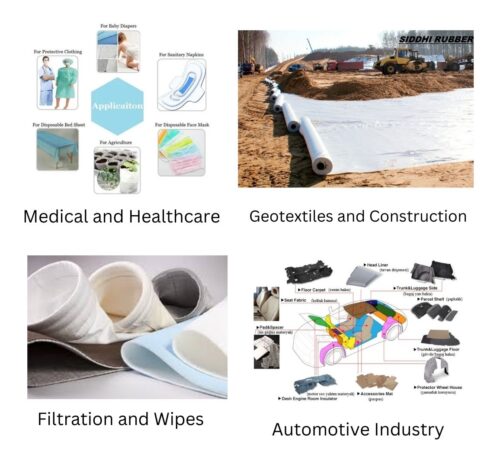
Advantages
Non-woven fabric offers several advantages over traditional woven or knitted fabrics. Some of the key advantages include:
- Versatility: It can be customized to suit specific requirements and applications.
- Cost-effective: The manufacturing process of non-woven fabric is generally less expensive compared to traditional weaving or knitting processes.
- Strength and Durability: Non-woven fabrics can possess high
- tensile strength and excellent durability, depending on the manufacturing technique and fibers used.
- Absorbency and Filtration: Non-woven fabric can be engineered to have excellent absorption and filtration properties, making it suitable for various applications in healthcare, filtration, and cleaning.
- Lightweight and Breathable: Non-woven fabrics are often lightweight and breathable, providing comfort in applications such as apparel and medical products.
- Eco-friendly: Many non-woven fabrics are recyclable and biodegradable, contributing to a more sustainable environment.

non-woven vs woven
While non-woven fabric offers numerous advantages, it also has some limitations. These include:
- Limited Heat Resistance: Some non-woven fabrics may have lower heat resistance compared to certain woven fabrics, making them unsuitable for high-temperature applications.
- Reduced Dimensional Stability: Non-woven fabrics may exhibit lower dimensional stability compared to woven fabrics, which can affect their suitability for certain applications.
- Limited Reusability: Not all non-woven fabrics are designed for multiple uses, and some may not withstand rigorous washing or cleaning processes.
- Specialized Manufacturing Processes: The production of certain types of non-woven fabrics may require specialized equipment and processes, which can add to the production costs.
Conclusion
Non-woven fabric has revolutionized various industries with its versatility, unique properties, and wide range of applications. From medical and healthcare to automotive and packaging, this remarkable material continues to find new uses and innovations. Its ability to provide strength, breathability, absorption, and filtration makes it a go-to choice for manufacturers worldwide. As technology advances, we can expect further advancements and improvements in non-woven fabric, enabling even more diverse and sustainable applications.
Frequently Asked Questions (FAQs)
Q : Is non-woven fabric recyclable?
Yes, many non-woven fabrics are recyclable. However, it depends on the specific type of fabric and its composition. Some non-woven fabrics can be recycled into new products or used as raw materials in other industries.
Q : What are the main differences between woven and non-woven fabric?
The main difference lies in the manufacturing process. Woven fabric is created by interlacing yarns in a crisscross pattern, while non-woven fabric is made by bonding or interlocking fibers through various processes. Woven fabric tends to be stronger and more durable, while non-woven fabric offers unique properties such as breathability and absorbency.
Q : Can non-woven fabric be used for outdoor applications?
Yes, this can be used for outdoor applications. However, it is essential to select a fabric that is specifically designed for outdoor use and can withstand the environmental conditions it will be exposed to, such as UV radiation and moisture.
Q : Are non-woven fabrics suitable for sensitive skin?
Yes, non-woven fabrics are often used in medical and healthcare products, indicating their suitability for sensitive skin. However, it is crucial to consider the specific fabric and its intended use to ensure compatibility with sensitive skin types.
Q : How long does non-woven fabric last?
The lifespan of non-woven fabric depends on various factors, including the quality of the fabric, its intended use, and the maintenance it receives. Generally, non-woven fabrics can last for several years with proper care and handling.
Thanx for reading! Here we have more on Textiles by GuiseGarner .



